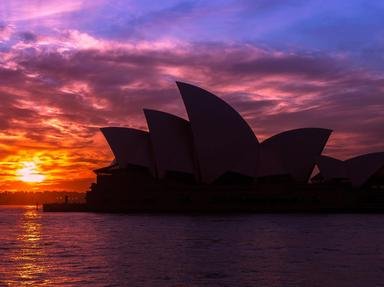Quiz Answer Key and Fun Facts
1. The discovery of the so-called Mungo Man in 1974 at Lake Mungo in New South Wales revealed a lot about the Aboriginal people prior to the arrival of Europeans. Which of the following is true regarding Mungo Man's remains?
2. Arriving at the Pennefather River in Queensland on 26th February 1606, which Dutch explorer was the first European to set foot in Australia?
3. 26th January, 1788 is a an important day in Australian history. It marks the the arrival of the First Fleet at Port Jackson in which present-day city?
4. What is the name of the Aboriginal man who was killed by William Keats in Perth in 1833 in one of the most famous clashes between white settlers and the Aboriginal people?
5. Why did people flock to the towns of Beechworth, Ballarat and Bendigo in the state of Victoria in the 1850s?
6. Which of the following was NOT a cause of the Eureka Rebellion in 1854?
7. Which woman, who is the first Australian to be canonized a Catholic saint, helped found the Sisters of St. Joseph of the Sacred Heart in Penola, South Australia in 1867?
8. When Australia became a federation on 1st January 1901, who became the first Prime Minister?
9. Which Australian city was the most heavily bombed during World War II?
10. Which iconic Australian landmark was opened on 20th October 1973 by Queen Elizabeth II, without its designer in attendance?
Source: Author
Joepetz
This quiz was reviewed by FunTrivia editor
gtho4 before going online.
Any errors found in FunTrivia content are routinely corrected through our feedback system.
